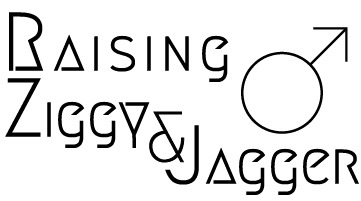Before falling pregnant, delayed cord clamping, or just cord clamping of any kind, wasn’t something I was familiar with, or all that interested in. What I knew of birth was the script followed on pretty much every TV show. Fast onset of labour, waters breaking on cue, lots of stomach gripping, screaming and exclamations of ‘the baby is coming’. Being told when and how to push, a quick efficient cutting of the cord, and we’re done.
No wonder when I went into labour with Ziggy I had no bloody idea I was in labour.
But as part of my preparation for birth, I started reading up about topics that before now had never much held my interest. One of these, was ‘cord blood banking’. A process where the blood left in your baby’s umbilical cord and placenta was collected and stored. In case your baby or child fell seriously ill and the stem cells it contained were one day needed.

Minutes old and taking it all in.
It sounded cutting edge. It was advertised as life-changing, life-saving. So I looked into it further. Two things stood out to me. One, it was expensive. Over $3000 not including the yearly storage fee. And two, there was an alternative. Another option for the ‘left over’ blood. One that was free and offered its own set of benefits to baby. Delayed cord clamping.
Delayed cord clamping? Why would you delay clamping and cutting the cord? What were the benefits of leaving a baby attached to their placenta? Well as it turned out, quite a few including; decreased risk of anaemia, and optimal placental transfusion, providing your baby with their full count of red blood cells, stem cells and immune cells at birth. These benefits were immediate. Not ‘maybe in the next 10 years of your child’s life’ but ‘now, the moment they are born’. The more I read the more it started making sense to me.
You see, the ‘cord blood’ is not ‘cord blood’ at all. It’s not ‘cord blood’ in the same way that when we give blood, we don’t give ‘arm blood’. We just give blood. The cord blood is your baby’s blood, it just happens to be in the cord at the stage of extraction, and not in your baby. And neither is it ‘left over’. If the placenta is left attached, for just a few minutes until it stops pulsating, that blood is pumped to your child, and as the umbilical cord turns from a red to grey, your baby turns from grey to bright pink.

Another fact that stood out to me was the volume of blood collected for banking is approx. 60ml. Now, on average a 3.6kg newborn has a blood volume of about 280ml. Taking 60ml of that – is huge! If a doctor asked to stick a needle into your newborn baby and collect nearly 20% of their blood moments after they were born, would you say yes? Because it’s pretty much the same thing. It’s just a needle into the umbilical cord instead of an arm, taking blood that has yet to be pumped into bub.
The World Health Organisation recommends a minimum of 3 minutes between birth, and cutting of the cord. However, many parents who choose delayed cord clamping wait a lot longer than that. You see another benefit to both mother and baby after birth, is time together. Skin to skin. Time to bond, time to rest, time to soak in each other and say hi after birth. The benefits to both mother and child of skin to skin immediately after birth cannot be discounted. If all has gone well with the birth, then why not allow time for mum and baby to rest and cuddle and marvel at each other. Why rush to cut a cord, or take the baby away for checks and measurements. That can wait.
And so, AJ and I made the decision that, all going well with our birth, we would leave our baby attached to his placenta until every last drop of blood was in his body. It was his blood and he had a right to it.

AJ cutting the cord.
Ziggy was born at 4:35am. Grey and winkled, ‘he looks like a goblin’ I exclaimed to my midwife. He was quiet, alert, looking around at this new world he had entered. And as I hugged him to me, the grey gave way to the brightest of pinks. He glowed.
We sat there in the pool, my son and I, for almost an hour after he was born. Resting, quiet, and soaking in the experience we had just been through. And when we were ready, when his cord was still and grey, all the blood now in our baby where it belonged, AJ took the scissors and separated him from his whenua. And then I bought him to my breast where he enthusiastically latched on for his first feed. Being born is hungry work.
Ziggy stayed bright pink for two days after birth. So bright, and so pink that on our first night in the birth centre we asked the midwife on duty if this was normal. She laughed and assured us everything was fine.
AJ and I are expecting our second child in September. We are doing far less reading and decision making this time. We know what we want, our birth plan is sorted.
‘Same again please’.

Bright pink, thanks to every last drop of blood.
Thank you for visiting. If you enjoyed this post, then you’ll love our Facebook page where there are a lot of posts and discussions around babies that don’t sleep, leaky bladders, breastfeeding, bed sharing and giveaways! We also post a lot of garden, bee, chicken and Ziggy images on our Instagram account. Come and join us.
Special credit to Cassie from Capturing Life Birth Photography.

















Recent Comments